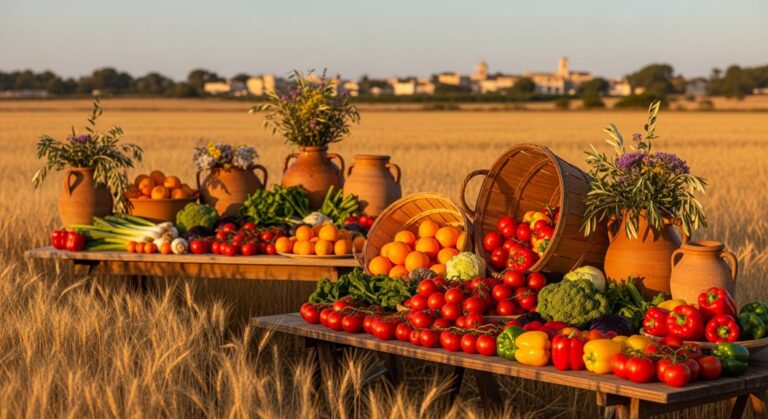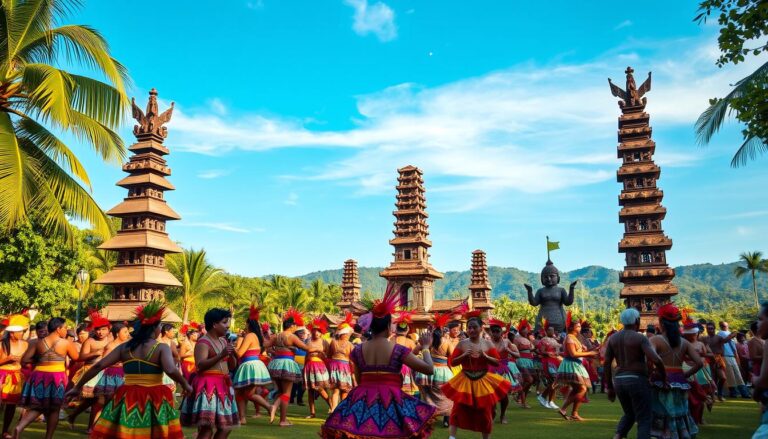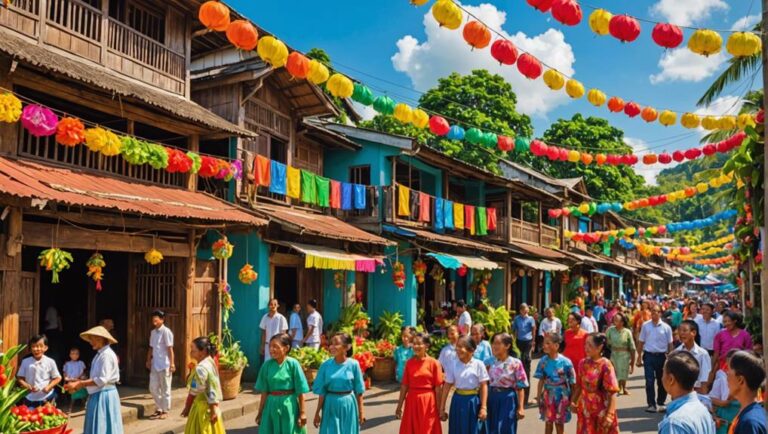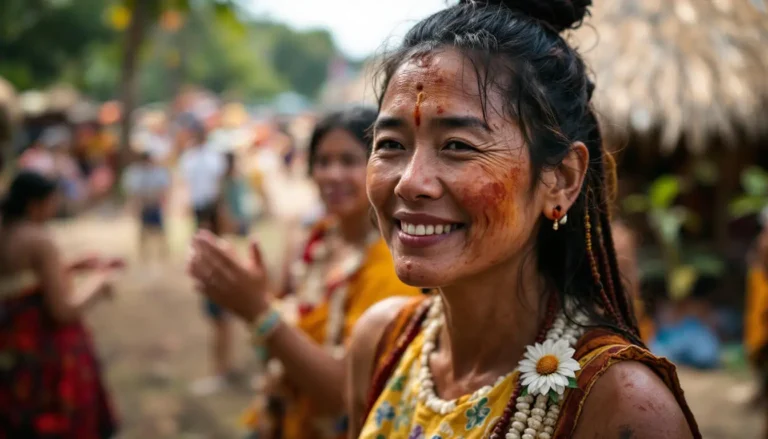Panagdadapun Festival Quirino: Essential Guide
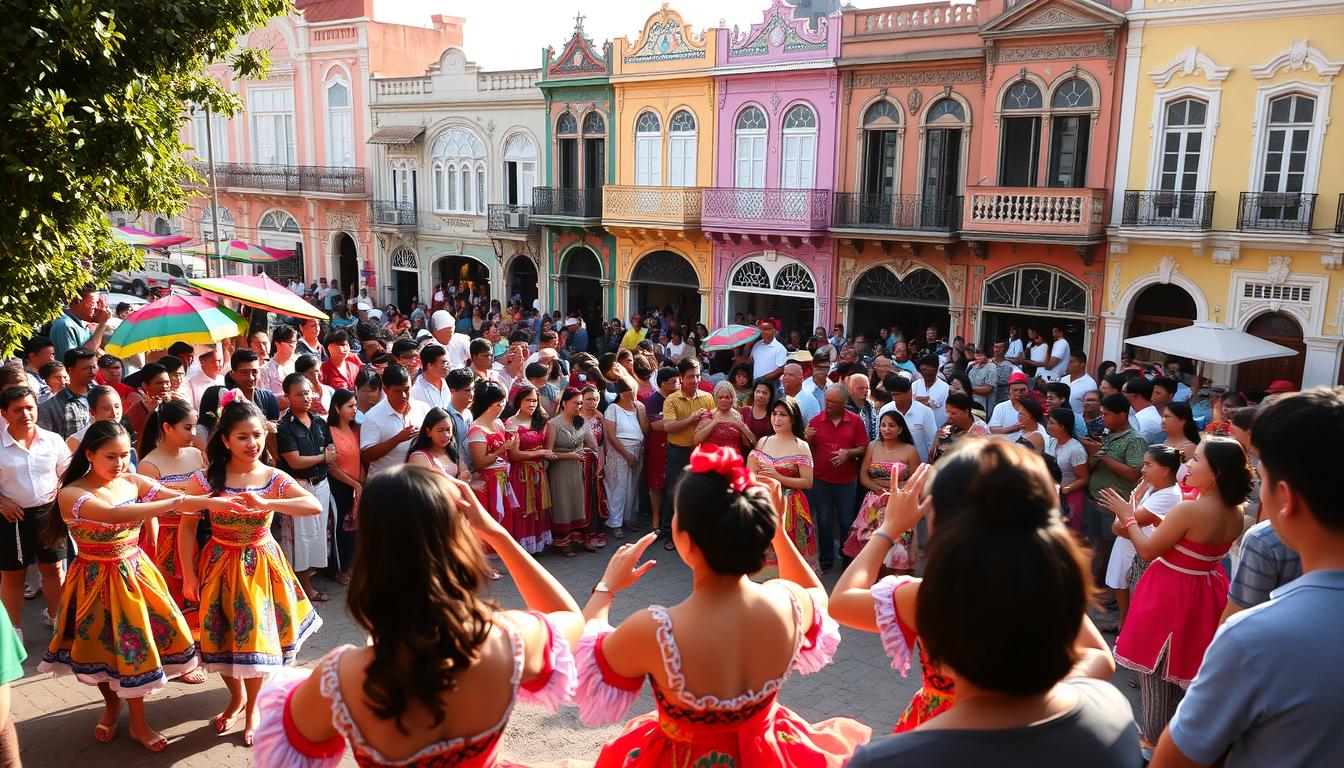
Every September, the province of Quirino comes alive with vibrant colors, music, and traditions during its biggest cultural heritage event. This five-day celebration honors both the region’s founding and its rich indigenous roots, creating a unique blend of history and festivity.
From September 6–10, locals and visitors gather to witness six towns showcase their distinct identities through parades, dances, and rituals. The event also highlights Quirino’s natural attractions, from waterfalls to adventure sports, making it a must-see for travelers.
In 2023, the silver edition marked 25 years of this iconic gathering, featuring expanded events and deeper nods to the province’s diverse heritage. Whether you’re drawn to history, nature, or community spirit, this occasion offers something unforgettable.
Quick Facts
- What: Annual cultural festival celebrating Quirino Province’s founding anniversary and indigenous heritage
- When: September 6-10 annually
- Where: Cabarroguis, Quirino Province, Philippines
- Duration: 5 days
- Language Origin: “Panagdadapun” is an Ilocano word meaning “gathering” or “convergence”
- Established: 1999 (celebrating 25th edition in 2024)
- Significance: Commemorates September 10, 1971 – when Quirino became an independent province
Key Takeaways
- Annual five-day event held September 6–10 in Cabarroguis.
- Celebrates Quirino’s founding and indigenous cultures.
- Features six towns, each with unique traditions.
- Includes adventure tourism highlights like wakeboarding.
- 2023 marked the 25th anniversary with special programming.
The History and Significance of Panagdadapun Festival
This annual event holds deep meaning for the people of Quirino. It represents their journey as a province and honors the diverse cultures that shaped their identity.
What is Panagdadapun Festival?
Panagdadapun Festival is the largest cultural festival in Quirino Province, Philippines, serving as both a founding anniversary celebration and a showcase of indigenous heritage. The festival name comes from the Ilocano word “panagdadapun,” which translates to “gathering” or “convergence.”
Key Festival Details
- Location: Cabarroguis (provincial capital), Quirino Province
- Regional Context: Cagayan Valley Region, Northern Luzon
- Historical Significance: Celebrates the creation of Quirino as an independent province on September 10, 1971
- Cultural Purpose: Preserves and promotes indigenous traditions of local ethnic groups
Historical Background
Province Formation Timeline
- 1966: Quirino became a sub-province of Nueva Vizcaya (Republic Act No. 4734)
- 1969: Cabarroguis municipality established (Republic Act No. 5554)
- 1971: Quirino gained independence from Nueva Vizcaya (Republic Act No. 6394, September 10)
- 1999: First Panagdadapun Festival held
Name Origin
Quirino Province was named after President Elpidio Quirino, the 6th President of the Philippines.
Indigenous Groups and Cultural Heritage
Primary Indigenous Communities
- Bugkalots (also known as Ilongots)
- Dumagats (Agta people)
- Gaddang
- Ifugaos
- Isinays
- Negritos (aboriginal forest dwellers)
Quirino’s Journey from Nueva Vizcaya to Independence
The area first became a subprovince in 1966. Five years later, Republic Act No. 6394 granted full independence on September 10, 1971. This date now marks both the founding day and the festival’s climax.
Separation from Nueva Vizcaya allowed Quirino to develop its own identity. The annual gathering celebrates this milestone while preserving local traditions. Each town showcases its distinct culture through performances and crafts.
How the Pandemic Shaped Recent Celebrations
COVID-19 forced cancellations in 2020-2021, disrupting this important cultural event. Organizers responded creatively when activities resumed in 2022. They introduced virtual pageants and strict safety measures under the theme “Basket of Happiness.”
The pandemic highlighted the festival’s role in preserving traditions. Even during lockdowns, communities found ways to share their heritage online. The 2022 return marked both a 25th anniversary and a symbol of resilience.
Panagdadapun Festival Activities and Highlights
Vibrant energy fills the streets of Quirino during its annual cultural showcase. Each day offers a mix of traditional performances, local flavors, and heart-pounding adventures. Whether you’re a history buff or thrill-seeker, there’s something unforgettable.
Festival Activities and Events
Core Events (September 6-10)
- Panagsalukag (Aglipay)
- Grand Parade (September 10) – Main highlight featuring street dancers
- Panagdadapun Street Dancing Competition – Six municipalities perform cultural dances
- Municipal Festival Showcases:
- Penenkakasisit (Nagtipunan)
- Pagay-Pagay (Saguday) – Rice harvest dance
- Panagsasalog (Maddela)
- Ginnamuluan (Cabarroguis)
- Pammadayaw (Diffun)
Cultural Activities
- Arts and crafts exhibitions featuring indigenous beadwork and pottery
- One Town One Product (OTOP) Agro-Industrial Fair
- Provincial Museum displays of ethnic artifacts
- Traditional games competitions
- Cultural immersion programs with indigenous tribes
Modern Attractions
- Quirino Motorismo – Major motorcycle sports festival
- Wakeboarding competitions at Quirino Watersports Complex
- Binibining Quirino beauty pageant
- Sports tournaments (Arnis, cycling)
- Adventure tourism activities
Indigenous Crafts, Food, and Competitions
Local artisans sold crafts like Bugkalot beadwork and Gaddang pottery. Food stalls served purple yam delicacies, with the Ube-licious contest drawing chefs province-wide. New in 2023:
- Mango wine tastings at the Q-Life Center
- Bamboo eco-park exhibits promoting sustainability
Quirino Motorismo and Adventure Tourism
Adrenaline junkies flocked to Quirino Motorismo, a motorcycle race with a 2023 “zero casualty” record. Nearby, the Watersports Complex hosted wakeboarding tournaments. Governor’s Rapids offered whitewater tours, blending tourism with nature.
New infrastructure, like a wellness center and digital project, enhanced visitor experiences. Yet the heart of the celebration remained its cultural roots—where past and present collide joyfully.
Experiencing Quirino: Travel Tips for the Festival
Exploring the province of Quirino during its annual celebration offers a perfect mix of culture and adventure. From seamless travel routes to hidden natural gems, here’s how to make the most of your visit.

Geographic and Tourism Context
Location Details
- Province: Quirino, Cagayan Valley Region
- Capital: Cabarroguis
- Neighboring Provinces: Aurora, Isabela, Nueva Vizcaya
- Geographic Feature: Upper floodplains of Cagayan River
Major Tourist Attractions
- Governor Rapids (Cagayan River, Maddela)
- Aglipay Caves and Provincial Forest Park
- Siitan Nature Park (Nagtipunan)
- Landingan Viewpoint
- Ganano Falls
- Various waterfalls and natural wonders
Getting to Quirino Province from Manila and Nearby Provinces: A Comprehensive Guide
Quirino Province, located in the Cagayan Valley Region of Northern Luzon, Philippines, is a hidden gem known for its lush forests, rivers, and cultural festivals like the Panagdadapun Festival. While it’s not as accessible as major tourist spots, reaching Quirino is straightforward via bus, flight, or private vehicle. The province’s capital, Cabarroguis, serves as the main gateway. Travel times can vary based on traffic, weather (especially during rainy seasons), and road conditions—Quirino’s roads are mostly paved but winding and mountainous.
Below, I’ll break down the most reliable routes from Manila and nearby provinces (Nueva Vizcaya, Isabela, Aurora, and Benguet/Baguio area). This information is based on current data from sources like the Department of Tourism (DOT), Rome2Rio, Philippine National Railways (PNR) alternatives, and recent traveler reviews on TripAdvisor and Google Maps (as of 2024). Fares are approximate in PHP and subject to change; always check for updates via apps like Bookaway or official bus company sites.
1. From Manila (Capital Region)
Manila is about 300-350 km south of Quirino, with travel times ranging from 3.5 to 10 hours. The most popular route goes via the Maharlika Highway (Route 1) through Cabanatuan (Nueva Ecija) and Santiago City (Isabela), then north to Cabarroguis.
Option A: By Bus (Budget-Friendly, 8-10 Hours)
- Why it’s best: Affordable, scenic overnight rides, and direct connections. Ideal for festival-goers on a budget.
- How to go:
- Take a bus from terminals like Cubao (EDSA) or Pasay in Manila to Santiago City, Isabela (a major hub, ~7-8 hours). From there, transfer to a van or jeepney to Cabarroguis (~12 hours).
- Major bus companies: Victory Liner, Five Star Bus, or Viron Transport. They operate regular and air-conditioned buses.
- Schedule and Fares:
- Departures: Frequent from 8 PM to midnight for overnight trips; daytime options available but slower due to traffic.
- Fare: PHP 800-1,200 one-way (Manila to Santiago); add PHP 100-200 for Santiago to Cabarroguis.
- Total time: 8-10 hours (including transfers).
- Tips: Book via RedBus or the company apps. Buses stop in Cabanatuan for meals. Roads are well-maintained but expect curves—bring motion sickness meds.
Option B: By Flight + Land Transport (Fastest, 3-4 Hours Total)
- Why it’s best: For time-sensitive trips, especially if combining with the festival.
- How to go:
- Fly from Manila (NAIA or Clark Airport) to Cauayan Airport (CYY) in Isabela (~1 hour flight). From Cauayan, take a van, taxi, or tricycle to Cabarroguis (~2 hours via Maharlika Highway).
- Airlines: Cebu Pacific or Philippine Airlines offer 2-3 daily flights to Cauayan (often via Manila-Cauayan routes).
- Schedule and Fares:
- Flights: Morning and afternoon departures; e.g., 6 AM flight arrives by 7 AM.
- Airfare: PHP 1,500-3,000 round-trip (promo prices as low as PHP 1,000).
- Ground transport: Vans from Cauayan Airport cost PHP 200-400/person; taxis ~PHP 2,000-3,000 for a group.
- Total time: 3-4 hours.
- Tips: Cauayan Airport is small, so flights are limited—book early. If no direct flight, fly to Tuguegarao (Cagayan, ~1.5-hour flight) and drive 2-3 hours north.
Option C: By Private Car or Drive (6-8 Hours)
- Route: Take NLEX/SCTEX to Cabanatuan, then Maharlika Highway north through Talavera, Alicia (Isabela), and Echague to Cabarroguis.
- Distance/Time: ~320 km; 6-8 hours without stops.
- Fuel/Tolls: PHP 2,000-3,000 round-trip (gas + tolls ~PHP 500).
- Tips: Use Waze or Google Maps for real-time traffic. Rest stops are plentiful in Nueva Ecija. Avoid driving at night due to poor lighting on rural roads.
2. From Nearby Provinces
Quirino borders Isabela (north/east), Nueva Vizcaya (south), and Aurora (east). Travel from these is shorter (1-4 hours) and often via shared vans (UV Express) or jeeps from provincial terminals. Buses from Baguio (Benguet) are also common for northern travelers.
From Isabela (e.g., Santiago City or Ilagan; 1-2 Hours)
- Why it’s best: Shortest and easiest—Isabela is Quirino’s northern neighbor.
- How to go: Vans or jeeps from Santiago’s terminal (Blai Terminal) directly to Cabarroguis or Aglipay. Route via Maharlika Highway.
- Schedule/Fares: Departures every 30-60 minutes; PHP 100-250 one-way.
- Time: 1-2 hours.
- Tips: Santiago is a transport hub; combine with a bus from Manila if coming from afar. Check for festival surcharges during September.
From Nueva Vizcaya (e.g., Bayombong or Solano;1.5-3 Hours)
- Why it’s best: Direct southern access; Quirino was once a sub-province of Nueva Vizcaya.
- How to go: Buses or vans from Bayombong Terminal to Maddela or Cabarroguis via theino-Nueva Vizcaya Road (paved but hilly).
- Schedule/Fares: Hourly vans; PHP 150-300.
- Time: 1.5-3 hours (longer if via Dalton Pass during peak hours).
- Tips: Dalton Pass (near Carranglan) can be foggy—drive cautiously. Ideal for those attending events in southern Quirino towns like Maddela.
From Aurora (e.g., Baler or Dingalan; 3-5 Hours)
- Why it’s best: Scenic coastal-mountain route for east coast travelers.
- How to go: From Baler, take a bus/van to Cabanatuan (Nueva Ecija), then north on Maharlika Highway to Quirino. Alternative: Dingalan route via the Sierra Madre mountains (more adventurous but rougher roads).
- Schedule/Fares: Buses via Genesis Transport from Baler to Manila terminals, then transfer; or direct vans to Santiago (PHP 400-600).
- Time: 3-5 hours.
- Tips: The Baler-Cabanatuan leg is ~3 hours; add time for transfers. Great for surfers combining Aurora beaches with Quirino adventures.
From Baguio (Benguet) or Northern Luzon (6-7 Hours)
- Why it’s best: For explorers from the Cordilleras; connects via mountainous roads.
- How to go: Buses from Baguio’s terminal to Maddela (Quirino’s southern entry) via Solano (Nueva Vizcaya) and Kayapa-Bagabag Road. Companies like Dangwa or Joy Bus.
- Schedule/Fares: 4-6 daily trips; PHP 500-800 one-way.
- Time: 6-7 hours.
- Tips: Winding roads with stunning views, stop at Ambaguio for coffee. From Tuguegarao (Cagayan), it’s a 3-4 hour drive south.
General Travel Tips for Quirino
- Best Time to Travel: Avoid typhoon season (June-November); September (festival month) sees more crowds but better events. Roads can flood—check PAGASA weather.
Transport Hubs in Quirino: Cabarroguis Bus Terminal for arrivals; tricycles (PHP 20-50) for local moves. - Costs Overview: Budget PHP 1,000-2,000/person one-way from Manila (bus); PHP 3,000+ for flights. Groups save on vans (PHP 5,000-8,000 chartered).
- Safety and Essentials: Quirino is safe but rural—carry cash (few ATMs), insect repellent, and water. Download offline maps. For festival attendees, book transport early as September 6-10 fills up.
- Eco-Friendly Note: Use public transport to reduce emissions in this nature-rich province. Rent e-bikes in Cabarroguis for short trips.
- COVID/Health Updates: As of 2024, no restrictions, but wear masks on public transport and check DOT advisories.
Must-See Attractions Beyond the Festival
While the Panagdadapun Festival captivates with its parades, dances, and cultural showcases, Quirino Province is a treasure trove of natural beauty and adventure spots that extend your visit far beyond the festivities. Nestled in lush Cagayan Valley, the province’s six municipalities—Cabarroguis, Aglipay, Diffun, Maddela, Nagtipunan, and Saguday—offer diverse attractions, from cascading waterfalls and hidden caves to river thrills and eco-parks. These sites highlight Quirino’s role as a gateway to Sierra Madre’s wilderness, perfect for hikers, nature lovers, and adrenaline enthusiasts. Many are accessible year-round, but September’s drier weather during the festival makes it an ideal time to explore. Local guides (available for PHP 500-1,000 per day) are recommended for safety and insights into indigenous lore.
Here’s a curated list of must-see attractions, grouped by type and location for easy planning. Most are within a 30-60 minute drive from Cabarroguis, the festival hub, and entry fees are minimal (PHP 20-100 per person).
Iconic Waterfalls and River Escapes
Quirino’s rivers and falls are fed by the Cagayan River’s upper floodplains, offering refreshing swims and scenic hikes.
- Ganano Falls (Diffun): A stunning 40-foot (12-meter) cascade tumbling into a natural pool, surrounded by verdant cliffs and ferns. It’s a short 20-minute hike from the parking area, ideal for swimming or picnics. Legend ties it to indigenous healing rituals—ask locals for stories. Best visited post-festival for fewer crowds; bring water shoes for slippery rocks.
- Governor Rapids (Maddela): Thrilling whitewater rafting on the Cagayan River, with Class II-III rapids suitable for beginners. Organized tours (PHP 1,500-2,500 per person, including gear) last 2-3 hours and include birdwatching for endemic species like the eagle. It’s a short drive from Maddela’s town center and pairs well with riverside lunches of fresh tilapia.
- Siitan Nature Park (Nagtipunan): Cruise the Lalima River on bamboo rafts (PHP 300-500) through dramatic limestone gorges and hanging bridges. The 1-hour tour reveals hidden caves and Agta indigenous settlements. Hike to the park’s viewpoint for panoramic Sierra Madre vistas—sunset visits are magical.
Caves and Underground Wonders
Explore Quirino’s karst landscapes, formed over millennia, with formations that rival more famous sites.
- Aglipay Caves (Aglipay): A network of seven interconnected chambers in the Provincial Forest Park, featuring stalactites, underground streams, and bat colonies. Guided spelunking tours (PHP 200 entry + PHP 400 guide) take 1-2 hours; the “Crystal Cave” glows with mineral deposits. Combine with a forest trek to spot rare orchids—wear sturdy shoes and a headlamp.
- Landingan Viewpoint and Caves (Nagtipunan): Perched on a mountain ridge, this spot offers sweeping views of rolling hills and the Cagayan Valley. Nearby caves house ancient Ifugao artifacts; a moderate 1-hour hike leads there. It’s a peaceful alternative to busier sites, with photo ops at every turn.
Eco-Parks and Cultural Sites
These blend sustainability, flora, and heritage, often tied to the province’s indigenous communities.
- Capitol Complex (Cabarroguis): A one-stop haven right in the capital. The Orchidarium houses over 100 rare species, including the waling-waling (Queen of Philippine Orchids). Stroll the Bamboo Eco-Park for sustainable craft demos (buy handwoven baskets as souvenirs) and relax on the Boating Lake with pedal boats (PHP 100/hour). It’s family-friendly and just steps from festival venues.
- Quirino Watersports Complex (Cabarroguis): Beyond wakeboarding (highlighted during the festival), try kayaking or stand-up paddleboarding on a man-made lake (PHP 300-800 sessions). It’s eco-conscious, with solar-powered facilities, and offers lessons for all levels.
Adventure and Off-the-Beaten-Path Gems
For thrill-seekers, Quirino’s terrain delivers without the overtourism.
- Quirino Motorismo Trails (Various Locations): If you miss the festival’s motorcycle events, rent a dirt bike (PHP 1,000/day) for off-road trails through Maddela’s forests. Guided tours avoid hazards and include stops at hidden hot springs.
- Various Waterfalls and Viewpoints: Don’t overlook Nayong Palengke Falls (Saguday) for a secluded dip or Magsukut Viewpoint (Aglipay) for eagle-eye province panoramas. These lesser-known spots showcase Quirino’s 153,000 hectares of protected forests.
Practical Tips for Exploring
- Getting Around: From Cabarroguis, habal-habal (motorcycle taxis, PHP 100-300) or tricycles cover short distances. For groups, rent a van (PHP 3,000-5,000/day) via local tourism offices. Roads are paved but curvy—drive cautiously.
- Best Time and Costs: Post-festival (mid-September) avoids peak crowds. Budget PHP 1,000-2,000 daily for attractions, transport, and meals. Eco-fees support conservation.
- Sustainability and Safety: Stick to marked trails to protect habitats; Quirino’s biodiversity includes endangered species. Hire accredited guides from the Department of Tourism office in Cabarroguis. The province is safe, but inform someone of your itinerary and carry a first-aid kit.
- Accommodations Nearby: Stay at Riverside Lodges in Maddela (PHP 1,500/night, with river views) for adventure access, or the budget-friendly Capitol Hostel (PHP 500/night) in Cabarroguis for urban convenience. Many offer packages bundling tours.
Conclusion
Quirino’s vibrant traditions shine brightest during this annual gathering. The 2023 edition drew record crowds, proving its lasting role in preserving cultural heritage—from Ifugao dances to Dumagat storytelling.
Since its 2022 revival, the celebration boosted tourism by 30%, fueling local economies. Organizers now aim for UNESCO recognition, highlighting the province’s unique blend of indigenous and modern influences.
Mark your calendar for September 6–10, 2024, to experience these unforgettable events. With its rich heritage and ecotourism gems, Quirino solidifies its place as Luzon’s rising cultural hub.
FAQ
What is the Panagdadapun Festival?
When is the festival held?
How did the pandemic affect recent celebrations?
What are the must-see activities during the festival?
How do I get to Quirino from Manila?
Are there other attractions to visit in Quirino?
Disclaimer
The information provided in this guide about the Panagdadapun Festival, including event schedules, activities, travel routes, and attractions, is based on available data as of the updates in 2024. Festivals and events can be subject to changes due to weather, health guidelines, or local circumstances. Similarly, accommodation details, such as availability, rates, and booking options, may vary and are approximate.
For the most accurate and up-to-date information, please verify directly with official sources, including:
- The Quirino Provincial Tourism Office (contact: tourism@quirino.gov.ph or visit their official website at quirino.gov.ph).
- The Department of Tourism (DOT) Philippines (tourism.gov.ph) for event confirmations and advisories.
- Local government units (LGUs) in Cabarroguis or participating municipalities.
- Accommodation providers via their official websites or platforms like Booking.com, Agoda, or direct reservations.
We recommend checking closer to your travel dates to ensure a smooth experience. Safe travels!



